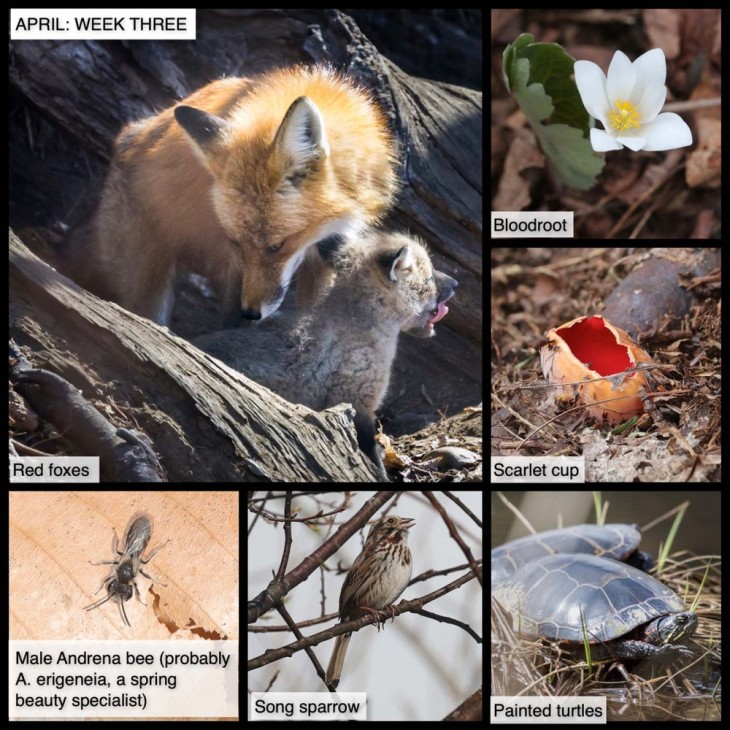This Week in the Woods, skunk cabbages seem to have gotten a later start this year than last, but we found a patch of them in a local wetlands, with their bright crimson spathes just beginning to open. Inside the spathes are yellow, pineapple shaped spadices (singular: spadix), which bear rows of small yellow florets. The plants get an early start on spring through a special trick: thermogenesis, a.k.a. creating their own heat, by metabolizing starch from their roots. As Michael Caduto notes in this Outside Story article:
“This self-generated warmth promotes early pollination, protects flowers from freezing and frost, mobilizes the flower’s fetid scent, and provides a haven for early-season insects. Pollen-gathering honeybees, in particular, are attracted to skunk cabbage flowers that are the most odoriferous.”
Did you notice weird trilling sounds down near the wetlands this past weekend? It’s still early to hear gray tree frogs but we’ve had a spate of unseasonably warm days, and as the Vermont Herp Atlas notes, “Gray Treefrogs (Hyla versicolor) will often call during the day from their foraging habitat in trees before and after their breeding seasons as long as the temperature is very warm (>70°F).” A disclaimer on our photo model: although it’s the same species as its froggy brethren in Upper Valley forests, we discovered this particular gray tree frog sitting on a porch chair by a pond in Virginia this past week. (The next day, it was still there, although it had switched chairs.) When not lounging pondside, gray tree frogs are really hard to find on a tree, both because they often stay high up in the branches, and because their remarkable “lichenate” camouflage pattern.
Vernal pools are waking up quickly now, and if you look closely, you may see newly laid amphibian eggs. Here’s a link to a downloadable, free – and really beautifully illustrated – guide to identifying spring amphibian eggs, which Northern Woodlands put together in collaboration with conservation biologist Steve Faccio from the Vermont Center for Ecostudies and artist Nick Bezio.
Finally, Jason Berard, Vice President of Stewardship at Upper Valley Land Trust, shared this image of hepatica blooming over the snow-flattened leaves. What a welcome sight! And thank you, Jason!
What have you noticed in the woods this week? Submit a recent photo for possible inclusion in our monthly online Reader Photo Gallery.


